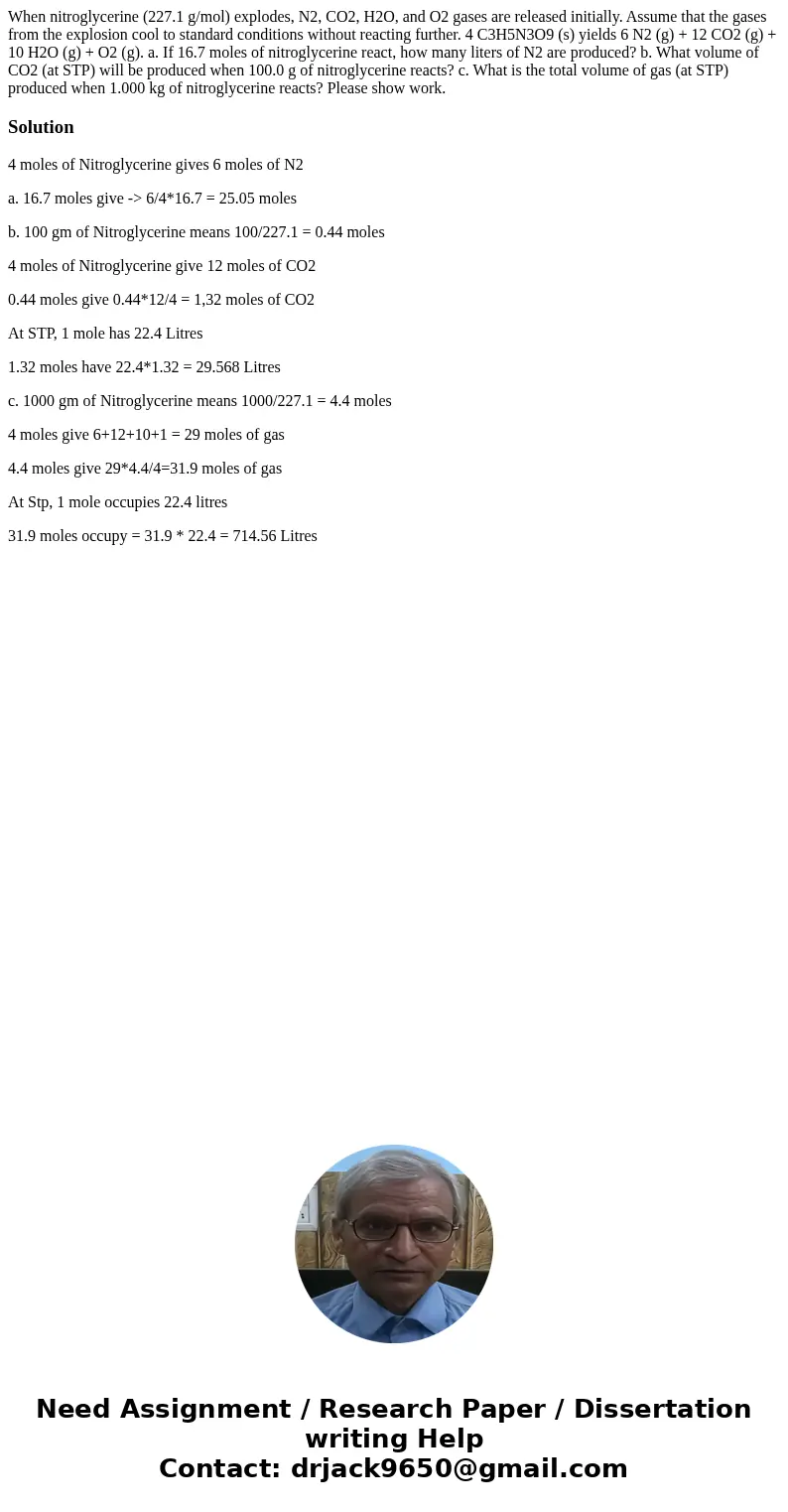When nitroglycerine 2271 gmol explodes N2 CO2 H2O and O2 gas
When nitroglycerine (227.1 g/mol) explodes, N2, CO2, H2O, and O2 gases are released initially. Assume that the gases from the explosion cool to standard conditions without reacting further. 4 C3H5N3O9 (s) yields 6 N2 (g) + 12 CO2 (g) + 10 H2O (g) + O2 (g). a. If 16.7 moles of nitroglycerine react, how many liters of N2 are produced? b. What volume of CO2 (at STP) will be produced when 100.0 g of nitroglycerine reacts? c. What is the total volume of gas (at STP) produced when 1.000 kg of nitroglycerine reacts? Please show work.
Solution
4 moles of Nitroglycerine gives 6 moles of N2
a. 16.7 moles give -> 6/4*16.7 = 25.05 moles
b. 100 gm of Nitroglycerine means 100/227.1 = 0.44 moles
4 moles of Nitroglycerine give 12 moles of CO2
0.44 moles give 0.44*12/4 = 1,32 moles of CO2
At STP, 1 mole has 22.4 Litres
1.32 moles have 22.4*1.32 = 29.568 Litres
c. 1000 gm of Nitroglycerine means 1000/227.1 = 4.4 moles
4 moles give 6+12+10+1 = 29 moles of gas
4.4 moles give 29*4.4/4=31.9 moles of gas
At Stp, 1 mole occupies 22.4 litres
31.9 moles occupy = 31.9 * 22.4 = 714.56 Litres

 Homework Sourse
Homework Sourse